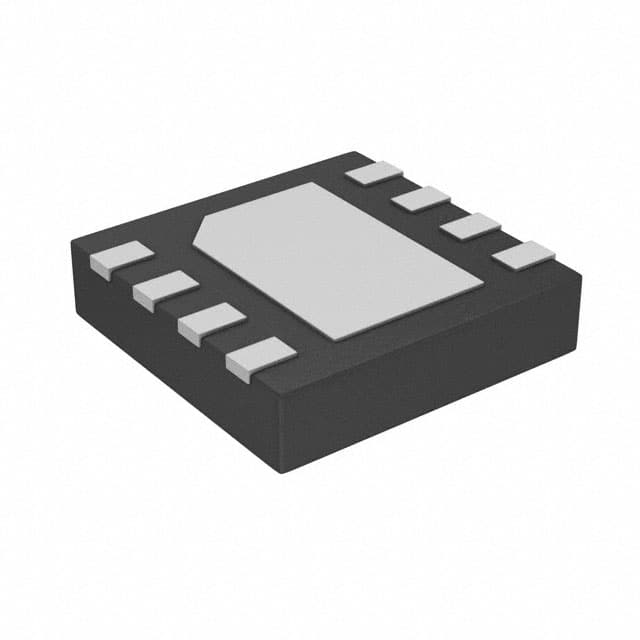Lihat spesifikasi untuk detail produk.

PIC12F615-E/MF
Product Overview
Category
The PIC12F615-E/MF belongs to the category of microcontrollers.
Use
This microcontroller is commonly used in various electronic devices and embedded systems for controlling and processing data.
Characteristics
- Low power consumption
- High-performance RISC CPU
- Flash program memory
- EEPROM data memory
- Analog-to-digital converter (ADC)
- Timers and counters
- Serial communication interface
- Wide operating voltage range
Package
The PIC12F615-E/MF is available in a small form factor package, known as the SOIC (Small Outline Integrated Circuit) package.
Essence
The essence of the PIC12F615-E/MF lies in its ability to provide a compact and efficient solution for controlling and managing electronic systems.
Packaging/Quantity
This microcontroller is typically sold in reels or tubes, with a quantity of 250 units per reel/tube.
Specifications
- Operating Voltage: 2.0V to 5.5V
- Flash Program Memory: 1.75KB
- RAM Data Memory: 64 bytes
- EEPROM Data Memory: 128 bytes
- ADC Resolution: 10-bit
- Number of I/O Pins: 6
- Maximum Speed: 20 MHz
- Communication Interfaces: SPI, I2C, UART
Detailed Pin Configuration
The PIC12F615-E/MF has a total of 8 pins, each serving a specific purpose:
- VDD - Power supply input
- GP0 - General-purpose I/O pin
- GP1 - General-purpose I/O pin
- GP2 - General-purpose I/O pin
- GP3 - General-purpose I/O pin
- GP4 - General-purpose I/O pin
- MCLR - Master Clear input
- VSS - Ground
Functional Features
- High-performance RISC CPU for efficient data processing
- Flash program memory for storing the program code
- EEPROM data memory for non-volatile data storage
- Analog-to-digital converter (ADC) for converting analog signals to digital values
- Timers and counters for precise timing and event counting
- Serial communication interface for data exchange with other devices
Advantages and Disadvantages
Advantages
- Low power consumption, making it suitable for battery-powered applications
- Compact size and small form factor package for space-constrained designs
- Wide operating voltage range allows compatibility with various power sources
- Versatile communication interfaces enable easy integration with other devices
Disadvantages
- Limited number of I/O pins may restrict the complexity of the system
- Relatively small program and data memory compared to higher-end microcontrollers
- Lack of advanced features found in more advanced microcontroller models
Working Principles
The PIC12F615-E/MF operates based on the principles of a RISC (Reduced Instruction Set Computer) architecture. It executes instructions stored in its program memory, processes data using its CPU, and interacts with external devices through its I/O pins and communication interfaces.
Detailed Application Field Plans
The PIC12F615-E/MF finds applications in various fields, including but not limited to: - Home automation systems - Industrial control systems - Automotive electronics - Consumer electronics - Medical devices - Internet of Things (IoT) devices
Detailed and Complete Alternative Models
Some alternative microcontroller models that offer similar functionality to the PIC12F615-E/MF include: - PIC16F628A - ATtiny85 - STM32F103C8T6 - MSP430G2553 - Arduino Nano
These alternatives provide different specifications and features, allowing designers to choose the most suitable microcontroller for their specific application requirements.
Word count: 511 words
Sebutkan 10 pertanyaan dan jawaban umum terkait penerapan PIC12F615-E/MF dalam solusi teknis
What is the maximum operating frequency of PIC12F615-E/MF?
- The maximum operating frequency of PIC12F615-E/MF is 20 MHz.What are the key features of PIC12F615-E/MF?
- The key features of PIC12F615-E/MF include 1.75KB Flash program memory, 64B RAM, 128 bytes of EEPROM data memory, and more.Can PIC12F615-E/MF be used for motor control applications?
- Yes, PIC12F615-E/MF can be used for simple motor control applications.What programming language is commonly used for PIC12F615-E/MF?
- The most common programming language for PIC12F615-E/MF is assembly language.Is PIC12F615-E/MF suitable for low-power applications?
- Yes, PIC12F615-E/MF is suitable for low-power applications due to its low power consumption features.What communication interfaces are supported by PIC12F615-E/MF?
- PIC12F615-E/MF supports SPI and I2C communication interfaces.Can PIC12F615-E/MF be used in automotive electronics?
- Yes, PIC12F615-E/MF can be used in automotive electronics for various control and monitoring functions.What development tools are available for programming PIC12F615-E/MF?
- Development tools such as MPLAB X IDE and PICkit programmers are commonly used for programming PIC12F615-E/MF.Are there any application notes or reference designs available for PIC12F615-E/MF?
- Yes, Microchip provides application notes and reference designs for various applications using PIC12F615-E/MF.What are the typical voltage and temperature operating ranges for PIC12F615-E/MF?
- PIC12F615-E/MF operates typically in the voltage range of 2.0V to 5.5V and temperature range of -40°C to 125°C.

